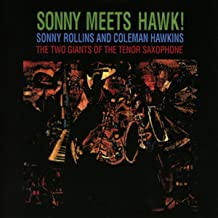
The Quarantined Jazz Voyager
For those of us who foresaw that we would still be social distancing that we would be listening to great music in the safety of our homes. This week I’ve taken the liberty of enjoying listening to Sonny Rollins and Coleman Hawkins on their 1963 album titled Sonny Meets Hawk! Released on RCA Victor. Recorded in the RCA Victor Studio B in New York City on July 15 & 18 1963, the album features some of Sonny’s most avant-garde playing.
The album was produced by George Avakian and marked the first time the two saxophonists recorded studio together, although they had appeared on stage together briefly that same year at the Newport Jazz Festival.
Track List | 41:21- Yesterdays (Jerome Kern, Otto Harbach) ~ 5:13
- All the Things You Are (Jerome Kern, Oscar Hammerstein II) ~ 9:33
- Summertime (DuBose Heyward, George Gershwin, Ira Gershwin) ~ 5:58
- Just Friends (John Klenner, Sam M. Lewis) ~ 4:40
- Lover Man (Oh Where Can You Be?) (Jimmy Davis, Roger “Ram” Ramirez, James Sherman) ~ 8:54
- At McKies’ (Rollins) ~ 7:03
- Sonny Rollins – tenor saxophone
- Coleman Hawkins – tenor saxophone
- Paul Bley – piano
- Roy McCurdy – drums
- Bob Cranshaw – bass (tracks 1, 2, and 5) – recorded July 15
- Henry Grimes – bass (tracks 3, 4, and 6) – recorded July 18
More Posts: adventure,album,club,genius,jazz,museum,music,preserving,restaurant,travel
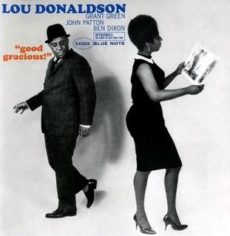
The Quarantined Jazz Voyager
Fourteen months and the end of social distancing and mask wearing is not in sight, and remains the fare for the times as does my continual joy of listening to music. So going into my music room I’ve selected for this week’s enjoyment from the shelves the album Good Gracious!. The studio album was recorded on January 24, 1963 at the Van Gelder Studios in Englewood Cliffs, New Jersy and released on the Blue Note label by saxophonist Lou Donaldson. The album was produced by Alfred Lion and released in the early part of June 1964.
If you’re a fan of Donaldson’s you will notice that his tone is richer and fuller than it is on many of his early-’60s records. He connects with the laid-back R&B grooves and soul-jazz vamps and it remains one of his best soul-jazz sessions.
Track List | 41:59
All compositions by Lou Donaldson except where noted- Bad John ~ 8:18
- The Holy Ghost ~ 8:38
- Cherry (Don Redman) ~ 5:17
- Caracas ~ 7:19
- Good Gracious ~ 6:52
- Don’t Worry ‘Bout Me (Rube Bloom, Ted Koehler) ~ 5:35
- Lou Donaldson – alto saxophone
- Grant Green – guitar
- Big John Patton – organ
- Ben Dixon – drums
More Posts: adventure,album,club,genius,jazz,museum,music,preserving,restaurant,saxophone,travel
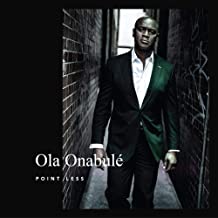
Daily Dose Of Jazz…
Ola Onabulé was born in Islington, London, England on March 30, 1964 and at the age of seven he was sent to Lagos, Nigeria, where he spent the next ten years in school. When he was seventeen he returned to the UK to study at Millfield School, then attended law school, almost completing a three-year degree before deciding to enroll at Middlesex Polytechnic for an arts degree. While studying, he began to perform in London clubs and venues, writing and performing his own material.
Onabulé’s career spans nearly two decades, releasing his music on his own label, Rugged Ram Records, after recording for Elektra and Warner Bros. His debut album, More Soul Than Sense, was released in 1995.
He has performed internationally, performed with Germany’s WDR Big Band and the SWR Big Band and appeared with the German Film Orchestra Babelsberg in Potsdam for a concert. Ola has played the main stages of the Montreal Jazz Festival and Vancouver Jazz Festival. A return to Canada in 2010 he performed at Victoria Jazz Festival, Vancouver Jazz Festival, and the Edmonton Jazz Festival. His list of credits reads like a who’s who of bog bands and small combos and continues to grow.
More Posts: history,instrumental,jazz,music,producer,vocal bandleader
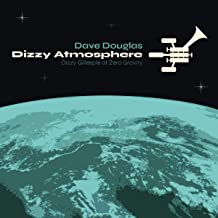
Daily Dose Of Jazz…
Dave Douglas was born on March 24, 1963 in Montclair, New Jersey and grew up in the New York City area, attending Phillips Exeter Academy, a private high school in New Hampshire. He was introduced to jazz by his father and as a young teen was shown jazz theory and harmony by pianist Tommy Gallant. He began performing jazz as a trumpeter during his junior year in high school while on an abroad program in Barcelona, Spain. After graduating from high school in 1981, he studied at the Berklee College of Music and New England Conservatory, both located in Boston, Massachusetts.
A move to New York City in 1984 had him studying at New York University with Carmine Caruso, and finished a degree in music. Early gigs included the experimental rock band Dr. Nerve, Jack McDuff, Vincent Herring as well as street bands around New York City. He played with a variety of ensembles and came to the attention of the jazz pianist, composer, and bandleader, Horace Silver, with whom he toured the US and Europe in 1987.
During the late 1980s, Douglas began playing with bands led by Don Byron, Tim Berne, Marty Ehrlich, Walter Thompson, and others in New York. He also played in the composer collectives Mosaic Sextet and New and Used.
Trumpeter, composer, and educator Dave Douglas has more than fifty recordings as a leader and over 500 published compositions. Has led and co-led quintets and sextets as well as electronic ensembles, won a Doris Duke Performing Artist Award, a Guggenheim Fellowship, an Aaron Copland award, and received Grammy Award nominations. As a composer, has received several commissions from among others from the Birmingham Contemporary Music Group, Essen Philharmonie, The Library of Congress, Stanford University and Monash Art Ensemble, which premiered his chamber orchestra piece Fabliaux in 2014.
He has served as artistic director of the Workshop in Jazz and Creative Music at the Banff Centre in Canada, co-founded the Festival of New Trumpet Music in New York, serving as its director. He is on the faculty at the Mannes School of Music and is a guest coach for the Juilliard Jazz Composer’s Ensemble. In 2016, he accepted a four-year appointment as the artistic director of the Bergamo Jazz Festival.
In 2005 Douglas founded Greenleaf Music, a record label for his albums, sheet music, podcasts, as well as the music of other modern jazz musicians. Greenleaf has produced over 70 albums.
More Posts: bandleader,educator,history,instrumental,jazz,music,producer,trumpet
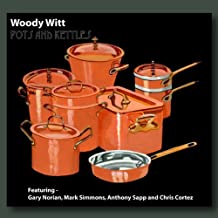
Daily Dose Of Jazz…
Woody Witt was born on March 16, 1969 and raised in Omaha, Nebraska. He started on the clarinet in fourth grade, switching his focus to saxophone the following year. Becoming a professional musician at the age of 16, he studied at the University of Houston, earning a Master’s degree in Jazz Studies from the University of North Texas, and a Doctor of Musical Arts from the University of Houston’s Moores School of Music.
The tenorist has recorded over thirty compact discs as a sideman and recorded twelve sessions as a leader. He has collaborated with Randy Brecker, Tim Hagans, Jim Rotondi, James Moody, David Liebman, Tim Armacost,Conrad Herwig, Joe LoCascio, Larry Ham, Mark Levine, Louis Hayes, Adam Nussbaum, Billy Hart, Nancy King and Gabrielle Stravelli. He has worked with the Houston Symphony, and has been featured on major third-stream works that blend together jazz and classical music.
He won the 2010 Chamber Music America French American Cultural Exchange grant and the 2014 International Jazz Saxophone Competition in Taiwan. Since 1999 Woody has been the artistic director of Houston’s jazz club, Cezanne, and now owns the club.
As an educator Witt has taught at Houston Community College since 2000, is an Affiliate Artist at the University of Houston, and has conducted countless master classes and workshops throughout the United States, Europe, Brazil and Asia.
Tenor saxophonist, composer and educator Woody Witt continues to expand his musical creativity.
More Posts: bandleader,history,instrumental,jazz,music,saxophone


